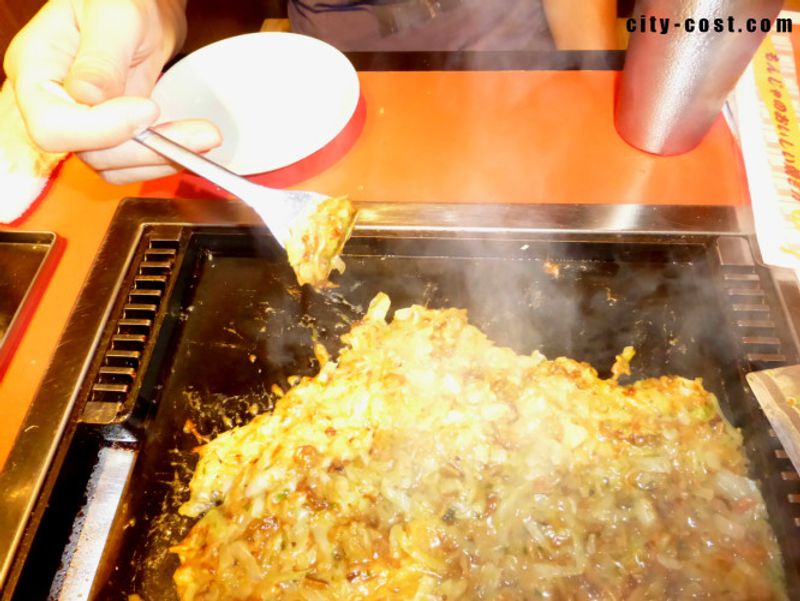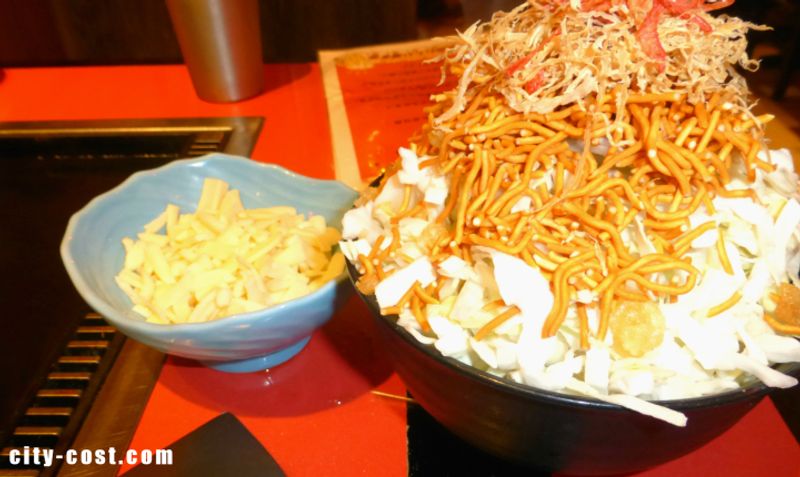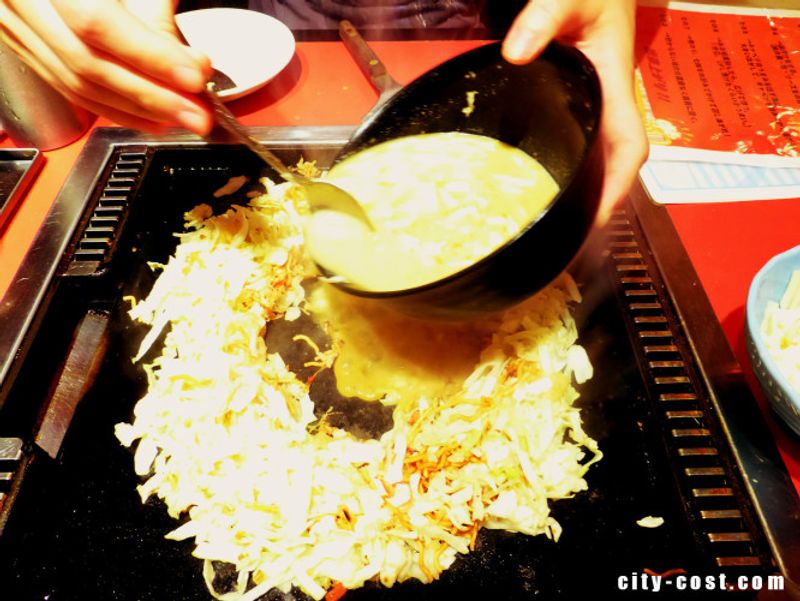Aug 25, 2015
How To Handle The Monjayaki Eating Experience

Monjayaki: pan-fried, batter-based moreish mix of meat, veg, seafood and anything else you’d care to throw in. Kanto’s answer to Kansai’s okonomiyaki.
There must be two schools of thought about 'monja'; it’s great date food, or it emphatically isn’t! Great date food because it keeps a couple busy. Otherwise sweaty palms are occupied, there’s the chance to display impressive technique, and an opportunity to show cultural willing. The noise, tools, and workload are a perfect preventative of awkward silence. Or they’re not, and monja is a complete mess. It’s a dating disaster ready to brutally expose our awful coordination and culinary ignorance, and send us packing from the restaurant covered in grease and smelling like a kitchen nightmare.
But, date or no date, monja is one of those eating experiences that we came to the other side of the world for. The problem for many of us though, is that we may lack the cultural cojones to give it a go. And that’s a shame, for whatever the occasion, monja is great fun (and, for most people, really tasty)! However, forewarned is forearmed, so here we look at how to handle the monjayaki eating experience (with the possibility of a follow-up date still intact).
At most monja restaurants ingredients are ordered ready-chopped, mixed, and presented in a bowl. Tables have hot plates, condiments are laid out and ready, and all your tools are provided.

Step 1
Hot plate on (wait staff usually handle this), oil it up. From the bowl of ingredients you ordered, spoon out the solids onto the plate (not the sauce/soup) and cook for a couple of minutes.
Step 2
Shape your solids into a ring (like a doughnut) and pour the sauce/soup from your bowl into the center. At this point, for flavor, add salt, soy sauce, hot stuff etc, to the sauce/soup. Give it a stir.
Step 3
Fold in the solid ingredients, mix, and spread out flat and thin on the hot plate. If you’ve a side order of cheese, now would be the time to sprinkle it on top and allow to melt.
Step 4
Eat. What you want is for the top of your construction to be melted/caramelised whilst the bottom has hardened a little. To eat, use the teaspoon-sized spatula to scrape bite-sized portions of monja towards you. Press down to ensure the monja sticks and arrives at your chops in one piece. Warning, it’s likely to be brutally hot! If things aren’t sticking to your spatula, allow for a bit more time to cook. Check your ‘spread’ isn’t too thick.

Despite doing a good impression of cat sick, monja is delicious. Be aware though, some orders will require plenty of seasoning to bring out the taste.
One serving of monja is likely not enough for two people. Three servings are a challenge for most appetites.
To prepare for your next order, scrape any detritus off the side of the hot plate and into the bin provided. Heat on, oil up, and get ready to go again.
Depending on the shop, wait staff may or may not come to your rescue to cook things for you.
There will be a bit of grease flying and spitting, so keep phones out of range and use aprons (if available). Be ready for the heat of the hot plate when leaning across the table.
Eaters in Tokyo should make for the undisputed capital of monja, Tsukishima. This island (built from reclaimed land in Tokyo Bay) is a pleasantly old-skool sort of place that just about fends off the looming towers of Tokyo’s bombastic development. The center of the island is home to Nishinaka Dori, aka Monja Street. Here, wall-to-wall monja joints vie for the attention of hungry punters. If you don’t know your stuff, there’s little to distinguish one from the other so follow the crowds (or not). There’s a tourist information center at the eastern end of Nishinaka Dori. Staff can give recommendations and hand out English-language ‘monja’ maps. Expect basic orders to start from between 700 - 1,000 yen. Tsukishima Station is serviced by the Yurakucho (Metro) Line, and the Toei Oedo (Subway) Line.
If you’ve got any monja recommendations, from anywhere in Japan, sign in and drop us a line below.



2 Comments
nowva
on Aug 28
I also have eaten Monjayaki、but I couldn't cook well. Particularly shaping my solids into a ring was difficult. But it was no matter if I failed.The taste didn't change. In addition I recommend burning a bit by the teaspoon-sized spatula and eating.
KamaT
on Aug 31
Thanks nowva! It is a bit tricky, isn't it! Still, it tastes good!